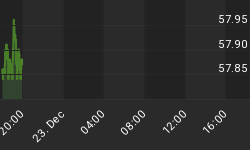It is rare in recent history for precious metals to appreciate in parallel with the broader stock market. Yet, this has been the case in the two years since the stock market began crawling out of the wreckage of the 2008 financial crisis. Although metals have vastly outperformed US equities over that time frame, it is noteworthy that stocks have gone up at all. Since January 2, 2009, the S&P 500 stock index is up just about 50%. Over the same time, gold is up 68% and silver is up a staggering 267%. With rising interest rates, oil at over $100 a barrel, and the recovery running out of steam, many investors are wisely asking if the markets are set for a sharp pullback. Given the correlation that we have seen across asset classes, some are making the seemingly logical conclusion that metal prices are vulnerable.
The results of 2008 loom large in many calculations. In the second half of that year, when the extent of the financial catastrophe emerged into the light of day, the S&P 500 dropped some 31%. At the same time, gold dropped by more than 7% and silver almost 39%. Recent volatility in the shares of gold and silver mining stocks reveal that the fear of such reversals may be a growing concern among investors.
But one example does not a rule make, especially the example of a panic rush into dollars and US Treasuries. Wise long-term investors make decisions based upon fundamentals, and those for precious metals remain strong.
Throughout history, precious metals, especially gold, have been seen as a store of wealth and a hedge against inflation. But the assumption that gold is always negatively correlated with the stock market is incorrect. Rather, gold is negatively correlated with stability. For all intents and purposes, gold is equivalent to cash in a portfolio. In that role, it competes with the major fiat currencies.
Gold's rise has thus been driven by cash demand on two fronts.
First, while US savers have been pushed into the stock market in search of yield for a couple decades, the underlying value of the US dollar has deteriorated. This has driven more investors to allocate the cash portion of their portfolios to precious metals, even while the S&P rises. Both of these dynamics are motivated by the Fed's low interest rate policies since the early 1980s.
But a policy that causes precious metals and the stock market to correlate on the upside will cause them to diverge on the downside. As the Fed is forced to tighten interest rates, stocks will take the brunt of slowing economic activity. Still, we don't expect the Fed to be able to tighten to the level that real interest rates rise, i.e. bank interest pays more than the rate of inflation, because this could cause the federal government to default on its debts and further harm the teetering housing market. In an environment of negative real interest rates, gold should continue to rise.
The second front driving cash demand is the explosive growth of Asian markets. Traditionally, certain cultures, such as in India and China, have favored gold and silver as both a display and as a store of wealth. As wealth has been accumulated fast in these countries, their demand for gold has increased greatly. In addition, their central banks and those of other nations, such as Russia, also have been massive buyers of gold in recent months. This trend is a continued bullish indicator for precious metals regardless of how the US markets perform.
How might these two factors ultimately benefit gold and silver?
There is a growing realization that recent economic growth has been financed by huge Federal Reserve subsidies. This has built up bullish momentum in the metals market that should continue until real interest rates turn positive. And even if interest rates do rise (which could be a negative for metals) prices of existing Treasuries will fall. Investors selling at a loss may turn to precious metals as an alternate safe haven.
Meanwhile, important international interest rates are already rising, including in such key economies as China, Australia and in the EU. These moves should channel the inflationary impact of QE and artificially low U.S. interest rates back into the dollar, thereby exerting upward pressure on the dollar prices of precious metals.
However, what may be the single greatest upward price pressure is the increasing fear of a debt crisis leading to a currency collapse. It is important to recognize that, at $1,470 an ounce, gold stands at only some 61 percent of the present value of its 1980 all-time high of $850, which, adjusted for inflation, is some $2,400 an ounce. Given the frail state of the US economy today, the chance of a local collapse is much higher than in 1980, when America was the world's largest creditor - instead of its largest debtor.
Therefore, it appears that, despite some volatility, the price of precious metals could be set for a continued rise, and the stock market for a steep fall. Indeed, if inflation materializes at rates equal to those of 1980, a gold price above $2,400 looks feasible. Should it be accompanied by increased fears of a debt crisis and a threat of collapse in the US dollar, far higher prices could be in store.
Subscribe to Euro Pacific's Weekly Digest: Receive all commentaries by Peter Schiff, Michael Pento, and John Browne delivered to your inbox every Monday.
Click here for free access to Euro Pacific's new special report: What's Ahead for Canadian Energy Trusts?
Be sure to pick up a copy of Peter Schiff's hit economic fable, How an Economy Grows and Why It Crashes.
















